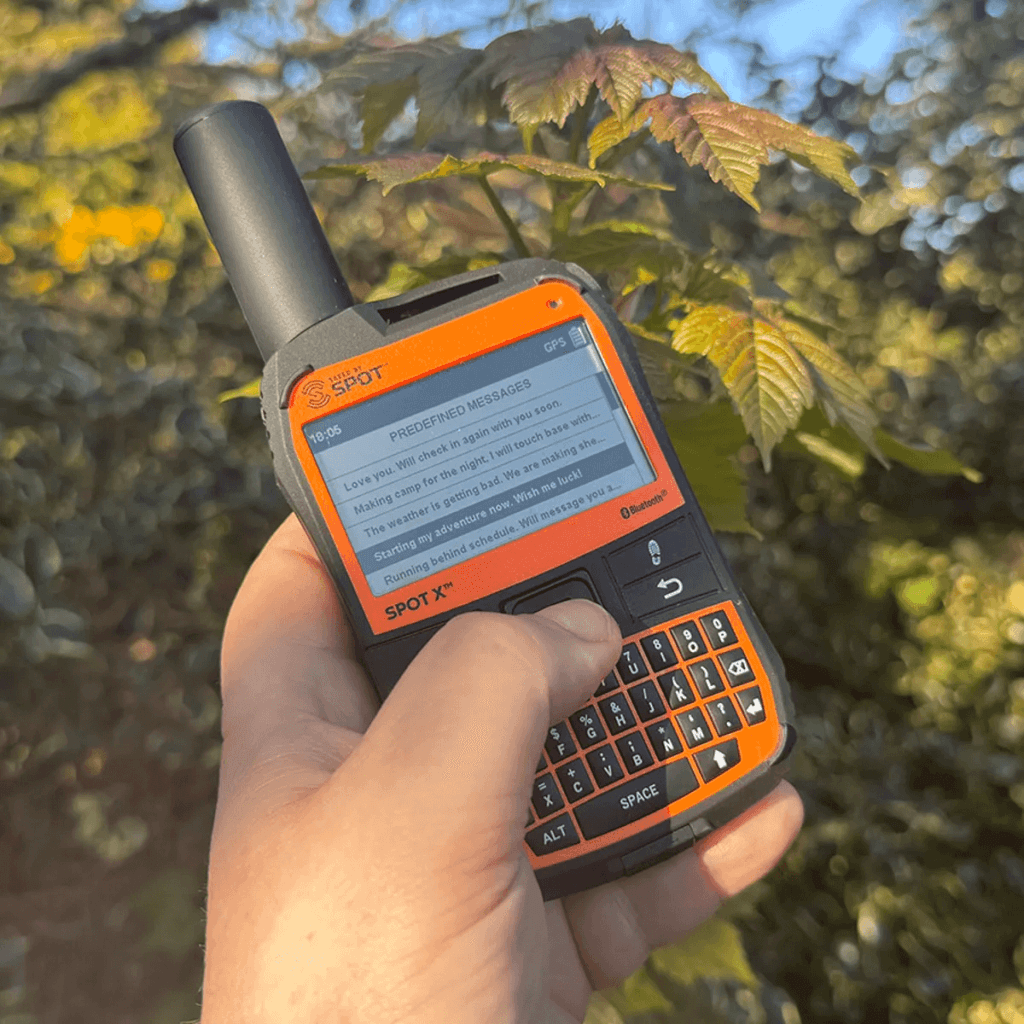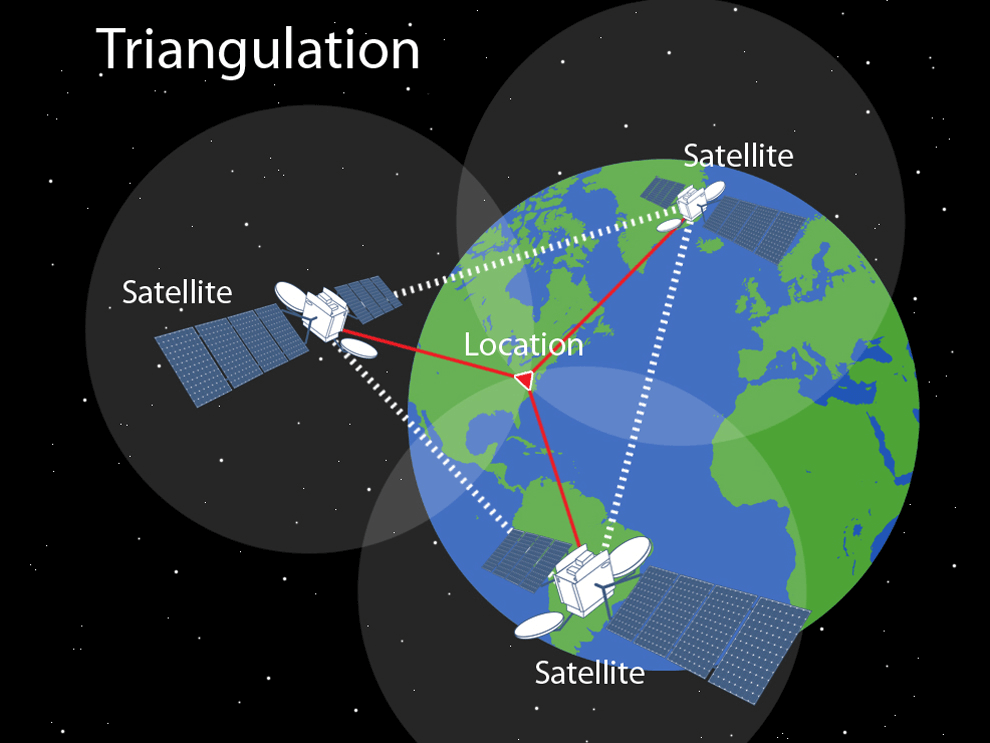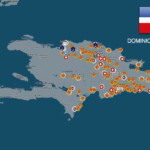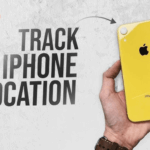Satellite phones are now popular in 2025. People love them because they promise more global connectivity, especially where traditional cellular networks are unavailable. However, a huge question also comes to mind: Can satellite phones be tracked? This guide will answer that burning question, helping you realize if satellite phone tracking is possible, the methods used, and the limitations.
What Is a Satellite Phone?
A satellite phone is a mobile communication device that connects directly to orbiting satellites instead of traditional cell towers. That connection allows you to call and send messages to other cell phones, landlines, or satellite phones.

How Does a Satellite Phone Work?
Whenever you place a call or send a message, your satellite phone signals small satellites in the Low Earth Orbit (LEO) about 2,000 km above the Earth’s surface. From there, it relays to the nearest ground station, also called a gateway or land-based center. The ground station routes the communication to your intended destination, anywhere on the surface of the Earth where the signal can reach unobstructed.
Hence, satellite phones offer global coverage. They are great at communicating from remote areas like the oceans or mountainous regions. This communication coverage is driving affordability through companies like SpaceX and Inmarsat. Today, people use them in places lacking reliable cellular services. We can also use them for boating trips, mining, maritime shipping, hunting, fishing, and more. They rarely get disrupted during natural disasters.
A Quick Comparison of Satellite, Cellular, & Landline Phones
Now that you know what a satellite phone is, you might wonder what distinguishes it from a cellular or landline phone.
| Feature | Satellite Phones | Cellular Phones | Landline Phones |
| Technology | Uses satellites (LEO, MEO, GEO) | Uses cell towers (4G, 5G, LTE) | Wired connection (PSTN) |
| Coverage | Global (including remote areas) | Urban/suburban (mostly depends on the towers) | Fixed to physical cable connections. |
| Reliability | Highly reliable in remote areas and during all sorts of weather patterns. | Depends on cell towers for availability. It may not be reliable during disasters. | Not applicable in remote areas.It may not be reliable during disasters. |
| Primary use | For communication in remote or emergencies | For everyday use | For home or office communication. |
| Additional features | Comes with GPS, SOS, and tracking | Has a broader range of features like internet access, GPS, tracking, apps and more. | Primarily used for voice calls. |
| Device required | Dedicated satellite phones or smartphones with SAT capabilities. | Cell phones/smartphones | Landline machines |
| Cost | Expensive (device & calls) | Affordable | Low-cost |
| Installation | No set up required | Uses a SIM card | Requires physical line |
Can Satellite Phones Be Tracked in 2025?
Yes, it’s possible to track satellite phones. But the process isn’t the same as monitoring cell phones. In this case, because satellite phones communicate using radio frequency signals via orbiting satellites, the signals can be intercepted and triangulated. Tracking these signals happens through methods like GPS/GNSS integration, Ground station logs, call metadata analysis, satellite triangulation, and many more.

That said, for the most part, satellite tracking occurs as a combination of two or more of these techniques. Even so, there are many legitimate reasons to track satellite phones. They include emergency and safety monitoring, national security/counterterrorism, and business operations. It’s important to realize that while government agencies can use advanced tools for tracking them, service providers and even hackers may also access location data.
How Satellite Phones Are Tracked: 8 Methods
Now, let’s talk about what it takes to set up or use a satellite phone tracker solution in the sections below.
Satellite Triangulation
As explained earlier, satellite phones connect directly through satellites. We can use that communication to track the satellite phone using a method called satellite triangulation. Here’s how the process occurs:

- When a satellite phone is used, it sends radio frequency (RF) signals that multiple satellites will receive.
- To figure out where the satellite phone is located, we will analyze the timing and strength of these signals. Doing that requires using a technique called Time Difference of Arrival (TDOA) to determine the satellite phone’s location. TDOA calculates how long (time difference) the signal takes to reach multiple known satellite receivers.
- Next, we can compare the time differences at each receiver. This helps us pinpoint the location of the RF signal emitted by the SAT phone.
- Usually, we can use three or more satellites for this triangulation. This ensures a higher area of interest (AOI). And then, we can look forward to a more accurate picture of the satellite’s phone geolocation data..
Doppler Shift Analysis
The Doppler effect happens when a moving object sends out a wave. Then, the waves change depending on how fast the object is and its direction relative to the observer. This principle is also useful for setting up a satellite cell phone tracker:
- When the satellite phone moves, the frequency of its signal shifts, creating that Doppler effect.
- You can actually measure the frequency of the signal shifts, using the concept you know as the Frequency Difference of Arrival (FDOA).
- When you combine the Time Difference of Arrival (TDOA) and the Frequency Difference of Arrival (FDOA), you can get highly accurate location tracking.
Built-in GPS and GNSS Integration
Moving on, let’s talk about tracking using GPS and GNSS Integration. Your satellite phones now have GPS or GNSS chips, just like modern cell phones. You can even purchase smartphones with satellite capabilities as well, especially phones made in the last two years. These GPS/GNSS chips mean you could use GPS tracking to find them. Here’s how it happens:
- The chips in the satellite phone pick up signals from GPS/GNSS satellites.
- Then, the chips help calculate the device’s latitude, longitude, and altitude.
- After that, the location data it detects can be transmitted along with the communication signals to service providers.
Ground Station Localization
Satellite signals are usually sent to the ground stations. These ground stations log the connection details with these signals, including timestamps, signal strength, and satellite IDs. When you cross-reference data from multiple ground stations, you can get a good idea of where the satellite phone is located. That said, the accuracy of this technique depends on how many ground stations are around the area and the strength of the signals.
Call Detail Record (CDR) Analysis
Satellite service providers maintain records of calls, including timestamps, device connection data, and identification. Your law enforcement can get the right legal permissions to ask the service providers to give them access to these records. Hence, they can use these records as a makeshift satellite cell phone locator. All they need to do is look at the location data in these records to paint a bigger picture of where and how the satellite phone has been used. They can also combine the records with the log data from the ground stations. Doing so helps them achieve a comprehensive historical record of the phone’s usage and approximate locations.
SIM and Network Registration Data
Like standard cell phones, your satellite phone also uses a SIM Card with a unique IMEI number. The IMEI number is the unique identifier of the satellite phone device and what the satellite networks use to identify it as well. The SIM Card stores your user identity and authenticates access to the satellite network for voice and data communication. Hence, it’s possible to request this SIM and network registration data when tracking the satellite phone’s location.
Software or Malware-Based Tracking
Malicious actors can deploy spyware or malware to the satellite phone. They can send the malicious software through phishing, attachments, or physical access. Because the malware is now on your satellite phone, it becomes their satellite phone tracker. Through the software, they would silently collect location data, network signals, call logs, messages, and audio recordings. Furthermore, the collected data will help the malicious actors get real-time or near-real-time tracking. This tracking method shows that your satellite phones, like smartphones and cell phones, can be attacked by malware. So, you need to practice good digital habits whether you use a satellite phone or a regular cell phone.
Operator-Based Monitoring
Satellite network operators such as Iridium, Inmarsat, and Globalstar have the technical capabilities to monitor the satellite phones connected within their networks. Using these capabilities, they can monitor device location, cell activity, and network registration data in real time. However, they will only do so if it’s legally required and performed under lawful authority.
Limitations of Satellite Phone Tracking
Now that we’ve covered everything on how you can use a satellite cell phone tracker, you might wonder if there are drawbacks to expect. Let’s discuss those.
- Obstructions still matter: Although satellite phones are reliable in remote regions, dense forests, mountains, or even massive skyscrapers can weaken signals.
- Not always real-time: Processing delays may also occur due to signal relays. This can, in turn, limit your ability to track the satellite phone actively.
- Legal restrictions: Some countries, including Cuba, North Korea, and India, ban or heavily regulate satellite phones. This is why, in some countries, the question of why satellite phones are illegal is prevalent. Hence, tracking or using satellite phones in these regions can be impossible if you live in those countries.
- No continuous transmissions: Unlike cellular phones, satellite phones only transmit when used. So, this can limit tracking windows.
- Mobility issues: Using a satellite phone on fast-moving ships or planes can complicate triangulation. Such situations can limit a satellite cell phone locator from working effectively.
- Battery or power issues: If the satellite phone is turned off or the battery is dead, then the satellite phone tracker won’t be able to find it.
FAQ
Who can track satellite phones legally?
Only authorized persons, such as law enforcement, the government, and satellite operators, can legally track satellite phones. However, they can’t do so whenever they like. They must obtain a court order or national security justification to track any satellite phone.
Can I track a satellite phone using its phone number?
No, unlike cellular networks, satellite providers don’t publicly share location data connected to phone numbers. Tracking any satellite phone might require operator cooperation, or it may also require installing tracking software on the satellite phone to enable tracking.
Do satellite phones have GPS tracking?
Most modern satellite phones have GPS tracking capabilities. Some examples include Iridium Extreme and Inmarsat IsatPhone 2. That said, such GPS data can only be accessed if the user submits it or gets authorization from the satellite service provider.
Can I track a satellite phone using its IMEI number?
It’s possible to track a satellite phone using its IMEI number, but that’s usually done by a satellite network operator or law enforcement. Individuals don’t have access to the systems in place for that, and they don’t have legal authorization to track a satellite phone by its IMEI number.
What’s the difference between tracking a satellite and a cellular phone?
The difference between satellite and cellular phones is how they provide communication capabilities. Cellular phones use nearby cell towers or may have GPS capabilities to be leveraged for tracking. Satellite phones rely on orbital signals, which can be triangulated to access location data.
Wrap Up
So, you can see that it’s possible to track a satellite phone. Here, we’ve also talked about the hurdles to expect when tracking one. Regardless, the best way to use a satellite cell phone locator is by having the government or network operators track them. They usually have more effective and specialized tracking solutions for that purpose. Casual tracking can lead to errors and inaccurate location data. Beyond that, you’ll love how satellite phones can be a lifeline in remote areas. But this does not in any way mean they are untraceable. It’s still possible to track them using special satellite cell phone locators.


